Mobile Network Operators Push on to 5G
We’ve been hearing about 4G mobile phones for several years now, and though they’re now mainstream, their full capabilities remain in short usage. Even though we do not have true 4G yet, mobile network operators push on to 5G.
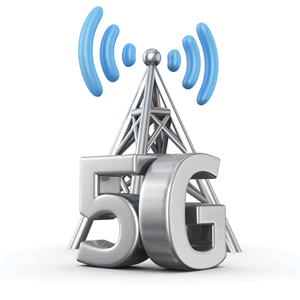 The evolution of the mobile phone networks, while seemingly slow, has made great progress over the last year. According to a recent report released by the Global mobile Suppliers Association (GSA), more than 500 operators in 161 countries are investing in LTE, and there were 288 commercially launched LTE networks in 104 countries as of the end of 2013. This makes LTE networks the fastest developing mobile technology ever deployed.
The evolution of the mobile phone networks, while seemingly slow, has made great progress over the last year. According to a recent report released by the Global mobile Suppliers Association (GSA), more than 500 operators in 161 countries are investing in LTE, and there were 288 commercially launched LTE networks in 104 countries as of the end of 2013. This makes LTE networks the fastest developing mobile technology ever deployed.
4G, LTE, LTE-Advanced
Currently, we do not use the term 4G, since none of these new networks yet meet its criteria. Last year at this time, Bishop & Associates discussed some of the technical differences between LTE, LTE-Advanced, 4G, and WiMax. These technologies are often referred to as Pre-4G or 3.9G. The progression of the technologies is shown in the following figure.
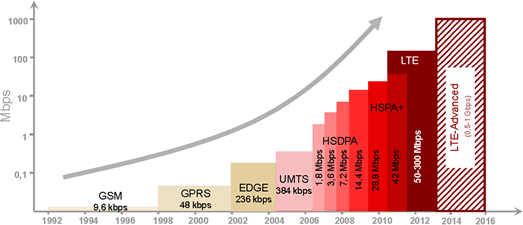
Figure 1: Mobile Phone Network Technology Progression (Source: Huawei, TNMO 2013)
3GPP LTE and LTE-Advanced
The 3rd Generation Partnership Project (3GPP) is the global industry group responsible for developing standards that cover “cellular telecommunications network technologies, including radio access, the core transport network, and service capabilities.” This includes LTE and LTE-Advanced. There are four technical specification groups – radio access networks, service and systems aspects, core network and terminals, and GSM EDGE radio access networks.
The progression of the network to LTE is shown in the following diagram.
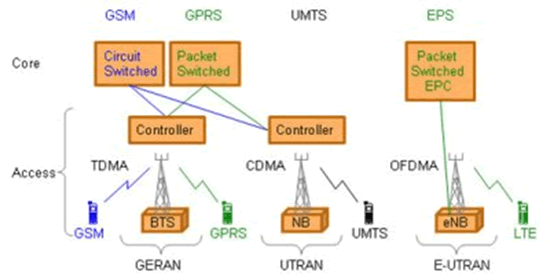
Figure 2: Network Solutions from GSM to LTE (Source: 3GPP)
This shows the evolution from time division multiple access (TDMA) circuit-switched GSM radio-access networks (RAN) through Wideband Code Division Multiple Access (WCDMA) hybrid circuit-switched/packet-switched UMTS (Universal Mobile Terrestrial System) RAN – which is today’s network – into OFDMA (Orthogonal Frequency Division Multiple Access) completely packet-switched Evolved Packet System (EPS) LTE RAN. This is necessary in order to support broadband connections (higher data rates) for new bandwidth-hungry applications such as video streaming. Theoretical maximum data rates can be as high as 75Mb/s for the uplink and 300Mb/s on the downlink.
The goal of LTE-Advanced (LTE-A) is to fulfill the requirements of 4G. The key new functionalities introduced in LTE-A are Carrier Aggregation (CA), enhanced use of multi-antenna techniques, and support for Relay Nodes (RN). These will in turn allow for these enhancements:
- Peak data rates will increase to 3Gb/s down and 1.5Gb/s up
- Spectral efficiency gains from 16b/s/Hz to 30b/s/Hz, which means more data can be sent within a particular frequency band
- Higher number of active simultaneous subscribers
- Performance gains at the cell edge (e.g. for downlink 2×2 MIMO at least 1.4 b/s/Hz/cell)
4G to 5G
Mobile network operators continue to build out their LTE networks with a push to upgrade to LTE-A (specified as true 4G) in the next five years, but are also looking to advance to 5G. In fact, South Korea has announced it will launch its first 5G service in 2017. Since it already has the fastest 4G network in the world, this may be possible; however, the standards for 5G are just starting to coalesce.
Even though standards are not developed yet, researchers are working on the 5G problem. Recently, at TNMO 2014, a researcher from the University of Surrey presented a view on a wireless backhaul network to support 5G. In his simulations, the scientist used millimeter wave wireless mesh backhauling to reduce network cost for small cell deployment. While this solution showed promise, there were still many issues to be addressed, the main one being network delay. In addition, there are very few small-cell architectures deployed as of yet.
Huawei has released its vision for 5G: “5G wireless networks will support 1,000-fold gains in capacity, connections for at least 100 billion devices, and a 10Gb/s individual user experience capable of extremely low-latency and response times.” Below is a representation of what it believes the network for 5G will look like.
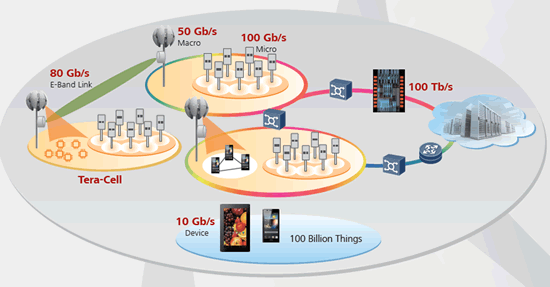
Figure 3: Huawei’s Vision of the Mobile Network to Support 5G (Source: Huawei)
The following diagram shows the proposed roadmap for 5G along with the relationship between the 3GPP and ITU standards development.
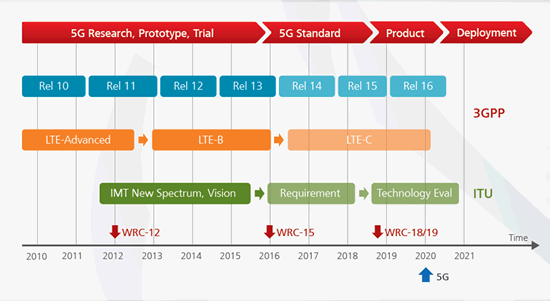
Figure 4: Mobile Network Evolution Roadmap (Source: Huawei)
The Mobile Backhaul Network
Mobile networks cannot progress to 5G without upgrades to the mobile backhaul network. While advancements have started, we are nowhere near ready for even LTE-A, much less 5G.
The hype surrounding mobile backhaul is still small cell technology but as yet, it is still not deployed in actual “production” networks, though there are at least a few carriers trialing them now. The current mobile backhaul network still consists of mostly microwave to connect the macro cell to the aggregation node, and Carrier Ethernet to connect aggregation nodes as shown in the following diagram. The fiber aggregation network is Carrier Ethernet, WDM, or, in older networks, still SONET/SDH/TDM.
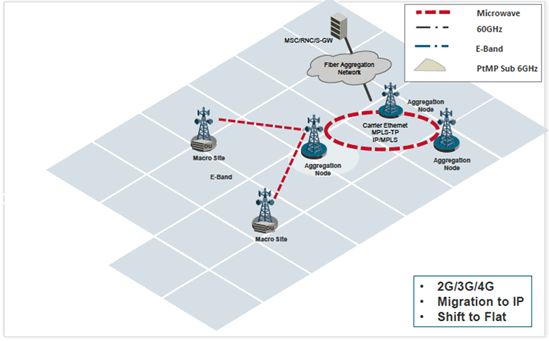
Figure 5: Traditional Mobile Backhaul Network (Source: Ceragon, TNMO 2013)
The evolution using LTE-A will be a heterogeneous network that will likely include small cells, super-size macro sites, several variations of microwave, and Carrier Ethernet both on fiber and in microwave.
New Technologies to Support 4G and Beyond
The new technologies in the network that are needed to support Gigabit-to-the-smartphone include both wired and wireless:
- Small Cells: These include femto, pico, metro, and micro cells. Each type covers different ranges and may use different frequency bands. As the names imply, femto has the shortest range of 10m; a picocell’s range is 200m; metro is 1-2km; and micro is 1-2km. While metro and micro have the same range, the types of equipment may be quite different. Metro is specifically designed for urban areas, while micro can be used in both rural and urban areas. Carriers started to work small cells to improve coverage for 3G networks. For 4G, they are considered a necessity.
- New Spectrum: We have been hearing about this for many years now and there have been various auctions in different countries to open up new frequency bands for telecommunications networks. Most LTE networks have been deployed in the 1800MHz band.
- 10G/40G/100G Carrier Ethernet: Most Ethernet connections in the mobile backhaul networks are 1Gb/s or below now. But with 4G-enabled devices on the verge of utilizing 1G connections, networks will quickly need to be upgraded through the higher data rates.
- G-PON: No carriers in the US are talking about leveraging their FTTH networks yet, but this is already starting to happen in Japan and Europe.
- IP/MPLS: This is the packet switching technology that will eventually take over the backhaul network according to most mobile experts.
Market Opportunities for LTE
The largest share of the LTE market lies in the 1800MHz frequency band. And, while LTE is certainly not ubiquitous yet, the devices nearly are, with 40.6% volume share of all device types according to GSA. Breakout of the types of devices is shown below.
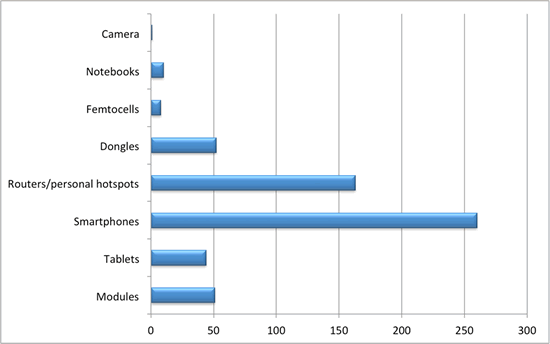
Figure 6: LTE User Devices by Type (Source: GSA, March 2014)
Below is Bishop & Associates’ forecast for LTE and LTE-A subscriber equipment connectors over the next five years. In 2014, 50% of the revenue generated for subscriber equipment will come from LTE devices. By 2018, this will be 72%, which represents a five-year CAGR of 39.5% for LTE devices.
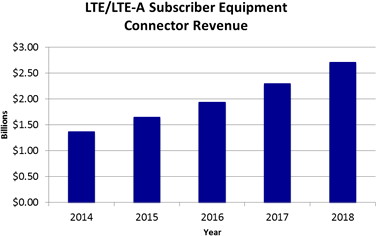
[hr]
 The World Telecom Market for Connectors
The World Telecom Market for Connectors
A comprehensive nine-chapter report analyzing the telecom market for connectors. This report provides detailed information on the telecom market by geographic region of the world, connector type consumption, and telecom market segment.
Telecom market segments covered in this report include:
- Enterprise Network Equipment
- Wireless Network Equipment
- Wireless Subscriber Equipment
- Wire-line Carrier Network Equipment
- Cable/MSO Equipment
- Other Telecom Equipment
For each market segment, the strategic implications of economics, competition, industry consolidation, convergence and technology advances are examined with respect to their impact on both the evolving architectures and corresponding evolution of the equipment design.
For a detailed table of contents and ordering information, click here.
Lisa Huff, Market Director, Bishop & Associates, Inc.

